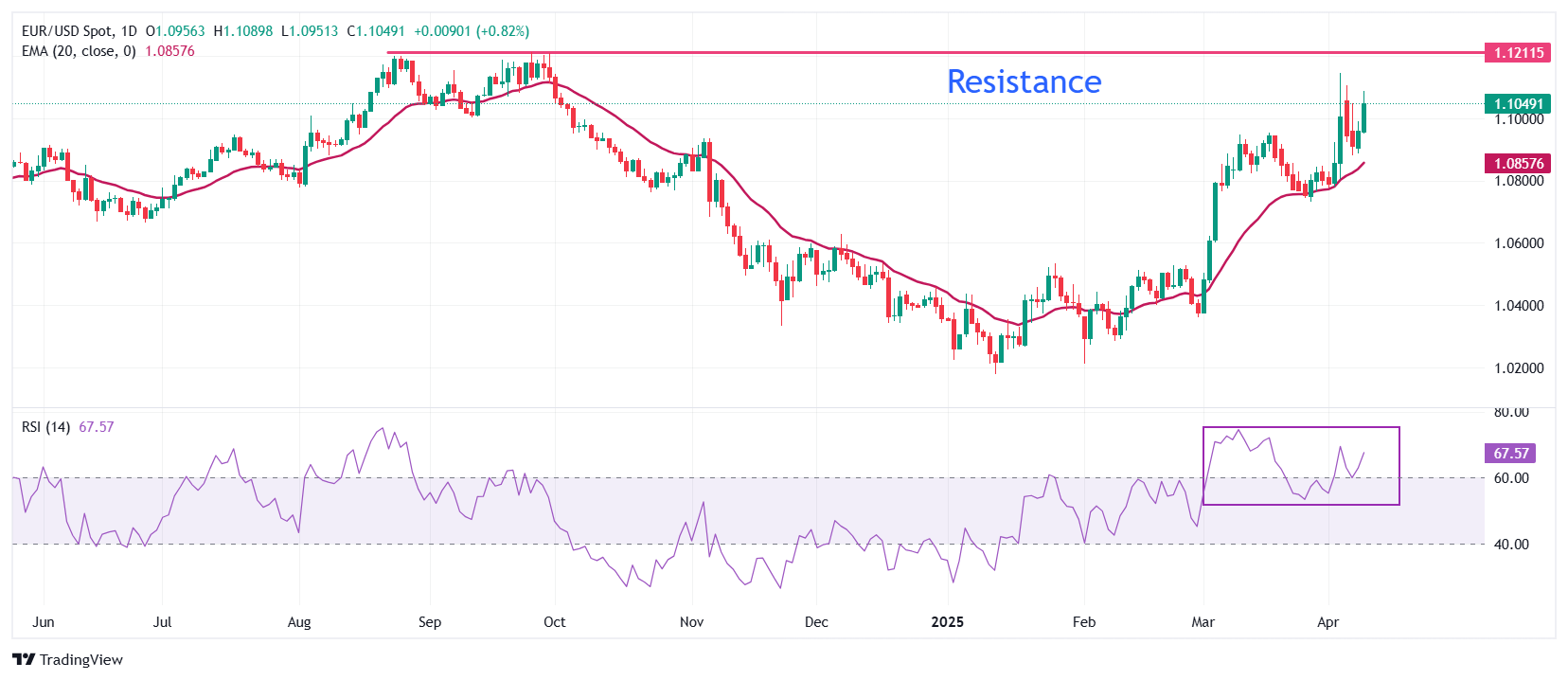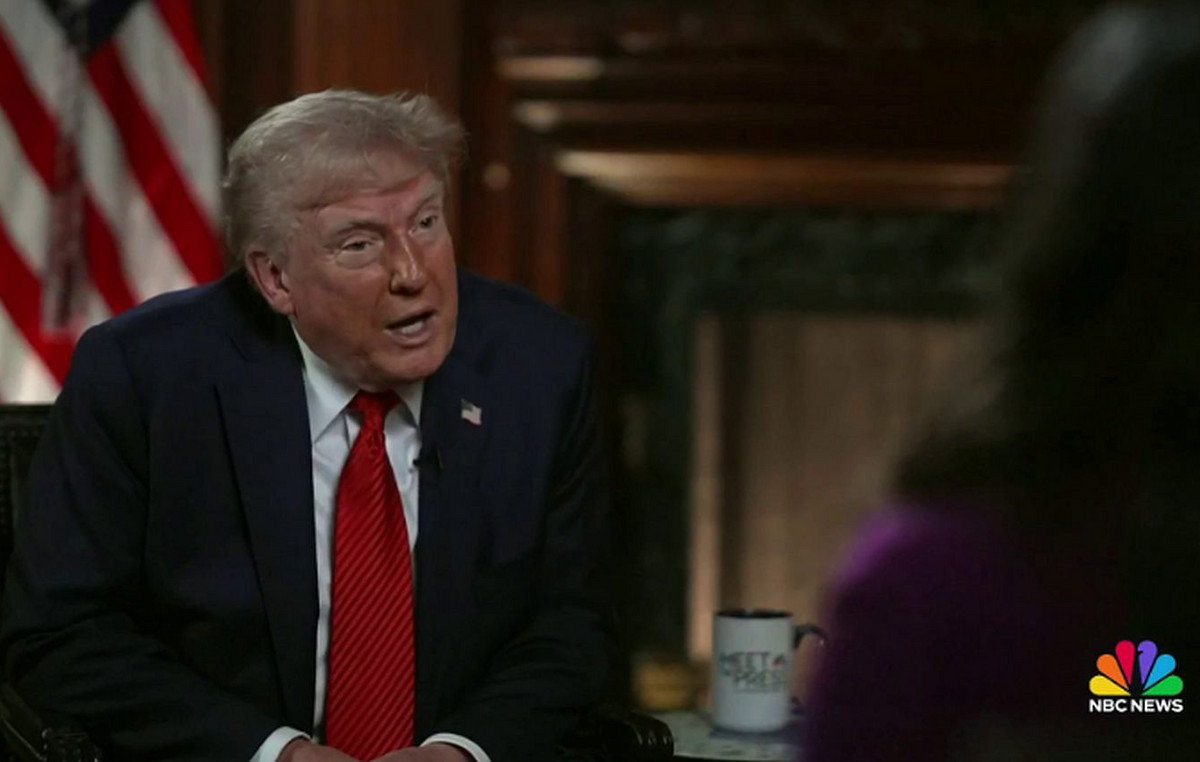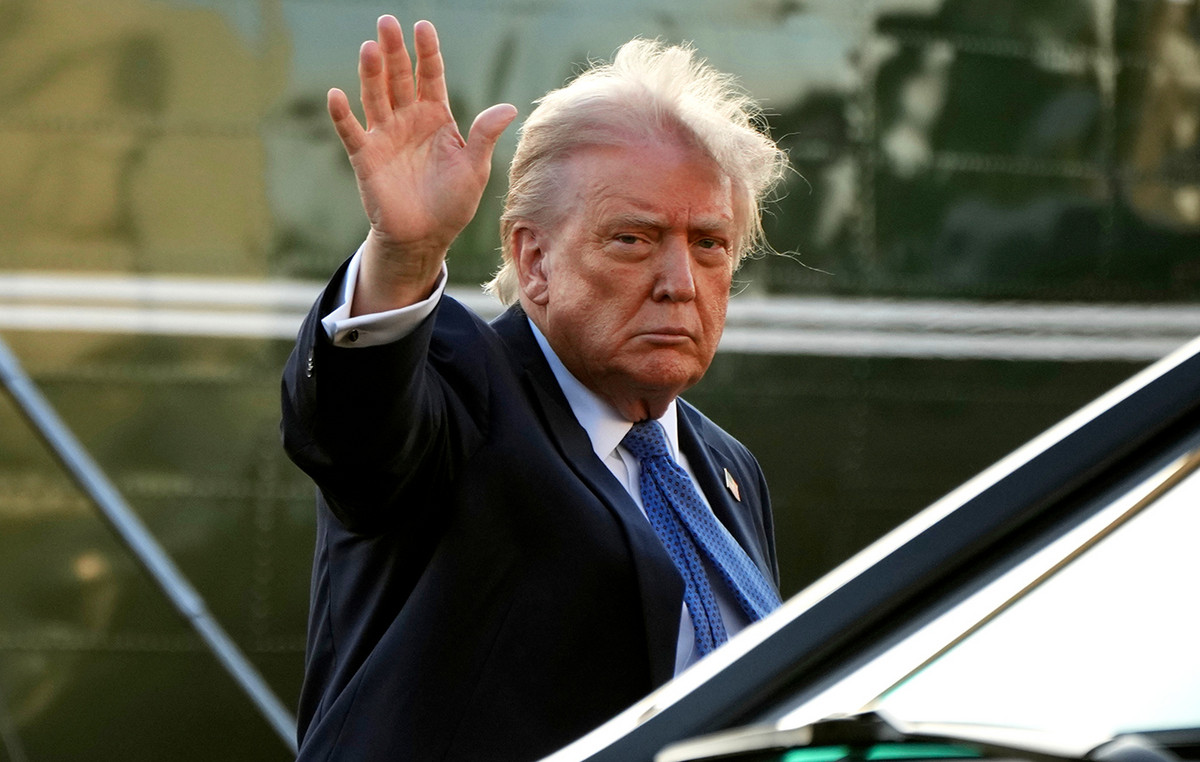- The EUR/USD jumps above 1,1050 while the US dollar faces pressures for the growing commercial war between the US and China.
- China warns of countermeasures against high reciprocal tariffs of Trump.
- The ECB šimkus supports an interest rate cut in April.
The EUR/USD advances about 1,1050 in the European session on Wednesday. The main currency pair remains firm while the US dollar (USD) remains under pressure for the growing commercial war between the United States (USA) and China.
Through the so -called White Paper, Beijing declared that China will take countermeasures to “safeguard their rights and interests.” The nation believes in the Essence of “commercial ties between the US and China”, but firmly opposes “unilateral and harassment restrictive measures.” China has made clear through the White Paper that “will counteract and fight until the end.”
These Beijing comments have emerged in the face of an increase in reciprocal tariffs by US President Donald Trump about China. On Tuesday, Trump raised the import tariff to 104% on China after the counter -healthy of Beijing 34% on US imports.
Market participants fear that the escalation of the commercial war between the world’s greatest powers could push the US economy towards a recession. This has led to a drastic increase in the bets of the merchants that support the Federal Reserve (Fed) to resume the relaxation cycle of monetary policy, which stopped in January. According to the CME Fedwatch tool, the probability that the Central Bank cut the interest rates in May has increased to 52.5% from 10.6% registered a week ago. The tool also shows that merchants are sure that the Central Bank will cut interest rates at the June meeting.
Meanwhile, investors expect the minutes of the Federal Open Market Committee (FOMC) of the March policy meeting to obtain new clues about the perspective of monetary policy. In March, Fed officials indicated that interest rates should remain in their current range of 4.25% -4.50% until they obtain clarity on how the president’s policies will shape monetary policy and the economic perspective.
In the economic field, investors will focus on US consumer price index (CPI) data for March, which will be published on Thursday. The inflation report is expected to show that the general CPI and the underlying CPI increased moderately by 2.6% and 3%, respectively.
Daily summary of market movements: EUR/USD wins after the agreement of German leaders on a coalition
- The strength in the EUR/USD is also driven by the superior yield of the euro (EUR). The main currency wins after the agreement of the German political parties to form a coalition. The Christian Democratic Union (CDU), led by Frederich Merz, reached an agreement with the center-left social democrats (SPD) to form a government, reports Reuters. A positive development in the stabilization of the Government of Germany would advance the debt restructuring plans and the creation of the Infrastructure Fund.
- However, investors prepare for volatility in the euro before Trump -led tariffs. Market participants hope that the imposition of 20% reciprocal tariffs by Trump on the Eurozone affects the already vulnerable economic growth of the Eurozone, especially in Germany, the largest export nation of the block towards the US.
- In response to the highest import tariffs of Trump, the finance ministers of all eurozone countries are scheduled to meet in Warsaw on Friday to discuss measures to contain the possible consequences of tariffs imposed by the United States before the meeting, the Minister of Finance of Poland, Andrzej Domański, said: “The supply chains interrupted For companies they will affect growth rates and European currencies. “
- In addition, the growing expectation of more interest rate cuts by the European Central Bank (ECB) is also expected to exercise some pressure on the euro. On Tuesday, the Governing Council member of the ECB, Gediminas Šimkus, said that a “basic point rate cut (PBS) is needed in April.” Šimkus added that the announcement of US tariffs justifies a “more accommodating” monetary policy, therefore, we need to move on to a “less restrictive policy position.”
Technical analysis: EUR/USD rises above 1,1050

The EUR/USD jumps above 1,1050 on Wednesday and aims to review the maximum of six months of 1,1147. The short -term tendency of the main currency pair is bullish since it remains above the 20 -day exponential (EMA) mobile average, which quotes around 1,0856.
The 14 -day relative force (RSI) index bounces up after 60.00 cooling, suggesting that a bullish impulse has resumed.
Looking down, the maximum of March 31, 1,0850 will act as the main support zone for the torque. On the contrary, the maximum of September 25, 1,1214 will be the key barrier to the euros of the euro.
Euro Faqs
The euro is the currency of the 19 countries of the European Union that belong to the Eurozone. It is the second most negotiated currency in the world, behind the US dollar. In 2022, it represented 31 % of all foreign exchange transactions, with an average daily business volume of more than 2.2 billion dollars a day. The EUR/USD is the most negotiated currency pair in the world, with an estimate of 30 %of all transactions, followed by the EUR/JPY (4 %), the EUR/GBP (3 %) and the EUR/AU (2 %).
The European Central Bank (ECB), based in Frankfurt (Germany), is the Eurozone reserve bank. The ECB establishes interest rates and manages monetary policy. The main mandate of the ECB is to maintain price stability, which means controlling inflation or stimulating growth. Its main tool is the rise or decrease in interest rates. Relatively high interest rates (or the expectation of higher types) usually benefit the euro and vice versa. The GOVERNMENT BOOK of the ECB makes decisions about monetary policy in meetings that are held eight times a year. The decisions are made by the directors of the National Banks of the Eurozone and six permanent members, including the president of the ECB, Christine Lagarde.
Eurozone inflation data, measured by the harmonized consumer prices index (IPCA), are an important economic indicator for the euro. If inflation increases more than expected, especially if it exceeds 2% of the ECB, it forces the ECB to rise interest rates to control it again. Relatively high interest rates compared to their counterparts usually benefit the euro, since they make the region more attractive as a place for global investors to deposit their money.
Published data measure the health of the economy and can have an impact on the euro. Indicators such as GDP, manufacturing and services PMIs, employment and consumer trust surveys can influence the direction of the single currency. A strong economy is good for the euro. Not only attracts more foreign investment, but it can encourage the ECB to raise interest rates, which will directly strengthen the euro. Otherwise, if economic data is weak, the euro is likely to fall. The economic data of the four largest economies in the euro zone (Germany, France, Italy and Spain) are especially significant, since they represent 75% of the economy of the euro area.
Another important fact that is published on the euro is the commercial balance. This indicator measures the difference between what a country earns with its exports and what you spend on imports during a given period. If a country produces highly demanded export products, its currency will gain value simply by the additional demand created by foreign buyers seeking to buy those goods. Therefore, a positive net trade balance strengthens a currency and vice versa in the case of a negative balance
Source: Fx Street
I am Joshua Winder, a senior-level journalist and editor at World Stock Market. I specialize in covering news related to the stock market and economic trends. With more than 8 years of experience in this field, I have become an expert in financial reporting.







